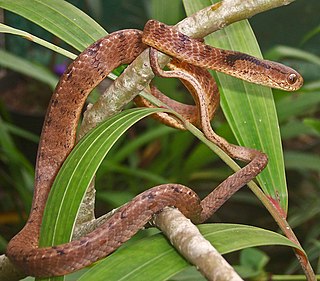
The Snakes of Europe is a book by the Belgian-British zoologist George Albert Boulenger, published in 1913, which is described in the author's preface as the first book written in English describing the snakes found in Europe. [1]

The Snakes of Europe is a book by the Belgian-British zoologist George Albert Boulenger, published in 1913, which is described in the author's preface as the first book written in English describing the snakes found in Europe. [1]

Ophisops is a genus of wall lizards of the family Lacertidae. They are small lacertids characterized by transparent lower eyelids that are completely or partially fused with the upper lids to form a cap over the eye. Species of the genus Ophisops are distributed in southeast Europe, northeast Africa, to west Asia.

George Albert Boulenger was a Belgian-British zoologist who described and gave scientific names to over 2,000 new animal species, chiefly fish, reptiles, and amphibians. Boulenger was also an active botanist during the last 30 years of his life, especially in the study of roses.

Macrovipera lebetinus is a venomous viper species found in North Africa, much of the Middle East, and as far east as Kashmir. Five subspecies are currently recognized, including the nominate race described here.

The Natricinae are a subfamily of colubroid snakes, sometimes referred to as a family (Natricidae). The subfamily comprises 37 genera. Members include many very common snake species, such as the European grass snakes, and the North American water snakes and garter snakes. Some Old World members of the subfamily are known as keelbacks, because their dorsal scales exhibit strong keeling.

The Colubrinae are a subfamily of the family Colubridae of snakes. It includes numerous genera, and although taxonomic sources often disagree on the exact number, The Reptile Database lists 717 species in 92 genera as of September 2019. It is the second largest subfamily of colubrids, after Dipsadinae. Many of the most commonly known snakes are members of this subfamily, including rat snakes, king snakes, milk snakes, vine snakes, and indigo snakes.

Dendrelaphis is a genus of colubrid snakes, distributed from Pakistan, India and southern China to Indonesia, Timor-Leste, the Philippines, Australia, New Guinea and the Solomon Islands. There are over forty described species. Asian species are known commonly as bronzebacks, while the Australo-Papuan species are simply called treesnakes. All are non-venomous and entirely harmless to humans.

Oskar Boettger was a German zoologist who was a native of Frankfurt am Main. He was an uncle of the noted malacologist Caesar Rudolf Boettger (1888–1976).

Calamaria is a large genus of dwarf burrowing snakes of the family Colubridae. The genus contains 66 recognized species. The genus is endemic to Asia.

Pareas is a genus of Asian snakes in the family Pareidae. All species in the genus Pareas are harmless to humans.

Dipsas is a genus of nonvenomous New World snakes in the subfamily Dipsadinae of the family Colubridae. The genus Sibynomorphus has been moved here. The genus Dipsas are as known as snail-eater.
Content in this edit is translated from the existing French Wikipedia article at fr:Gaston-François de Witte; see its history for attribution.

The Lamprophiidae are a family of snakes found mostly in Africa, but also in parts of southern Europe and western Asia. A few species reach southeastern Asia. There are 322 species as of April 2019.
Johann Gustav Fischer was a German herpetologist.

Plagiopholis is a genus of snakes in the family Colubridae.

Prosymna is a genus of snakes of the family Lamprophiidae. It is the only genus in the subfamily Prosymninae.

Hebius is a genus of snakes in the family Colubridae.

Indotyphlops is a genus of snakes of the family Typhlopidae. The genus is endemic to Asia.

Myriopholis is a genus of snakes in the family Leptotyphlopidae. Most of the species were previously placed in the genus Leptotyphlops.

Fowlea is a genus of snakes in the subfamily Natricinae of the family Colubridae. The genus is endemic to Asia.